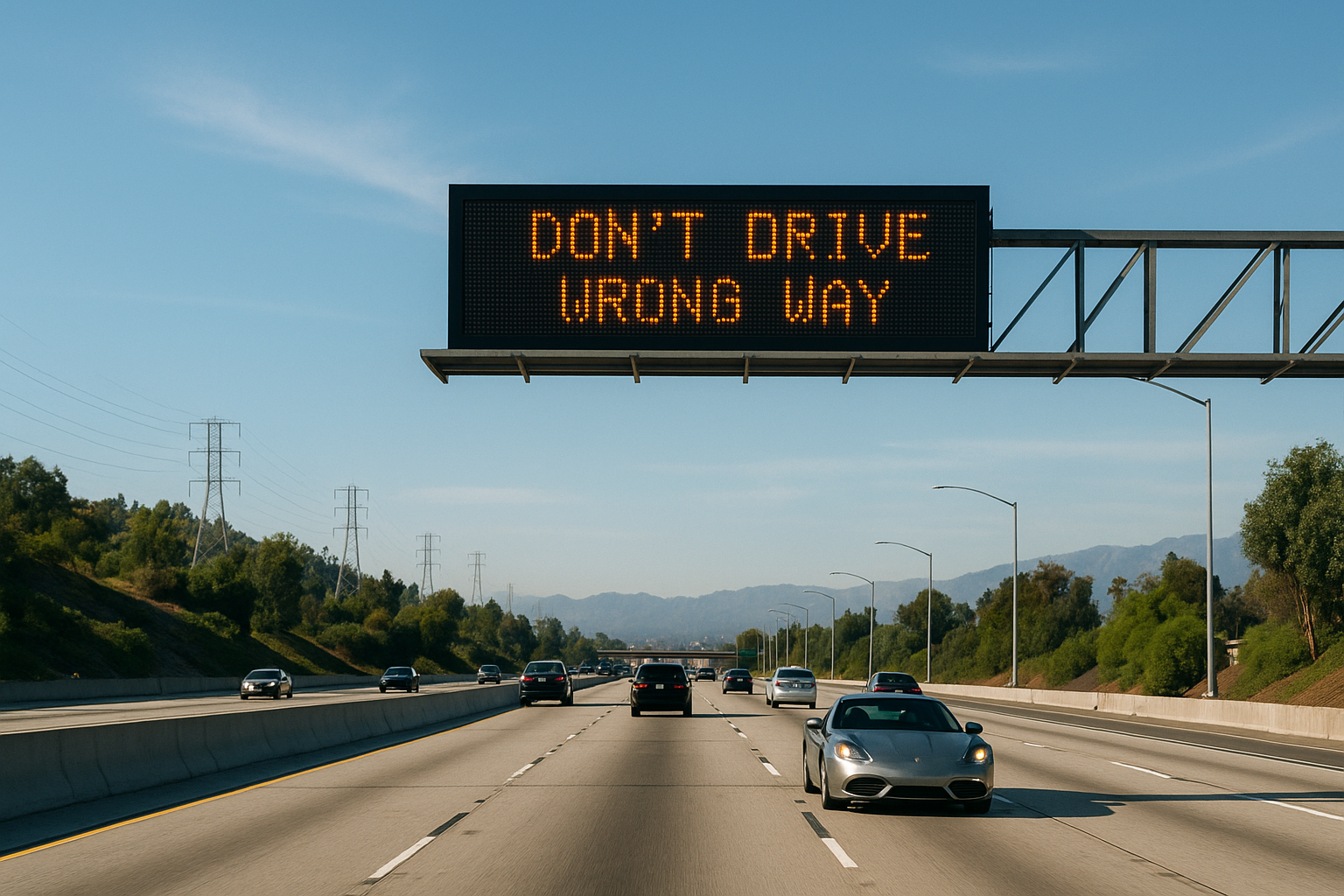"Don't Drive Wrong Way" and Value of Cognitive Empathy in Messaging

“DON’T DRIVE WRONG WAY.”
That baffling message glared from the digital traffic board above the freeway as I drove into work last summer. Merging into traffic, I couldn’t help but wonder: “Who exactly is this message for?”
After all, everyone reading it was, by definition, already driving the correct way. And anyone actually driving the wrong way – the single most important person this message would need to reach to be effective? It would be impossible for them to even see the sign.
This simple highway sign blunder perfectly illustrates a fundamental principle I teach in my marketing classes at USC: the critical importance of understanding your audience’s perspective. Psychologists call this cognitive empathy.
The Imperative of the Customer Perspective
I often start my undergraduate marketing classes with a simple question: “What is marketing?”
The answers fly in: “Advertising!” “Branding!” “Sales!” All true, but these are smaller pieces of a larger puzzle.
Marketing, at its heart, is about putting the customer at the center of everything you do. The most effective marketers aren’t just creative or analytical—they’re the ones who genuinely understand their customers and use that insight to reach, serve, and influence them effectively.
The First-Person Embodiment Technique
A simple (yet apparently all-too-often overlooked) technique to improve your messaging is to adopt the customer’s first-person perspective. When crafting any marketing message, ask yourself: “What would this look like, sound like, or feel like if I were the person whom this message is supposed to reach?”
To go a step further, try to physically and viscerally imagine yourself experiencing your marketing as your customer would.
If you’re creating a TV commercial, don’t just evaluate it on your laptop in a quiet conference room. Imagine watching it sprawled on your couch during a football game, friends chattering, phone in hand, attention divided.
Designing a TikTok ad? Picture seeing it on a tiny screen at 11:30 PM while scrolling in bed, not on your pristine 27-inch monitor in perfect lighting.
Context and environment dramatically alter how your message lands.
The Cost of a Cognitive Empathy Deficit
That highway sign perfectly demonstrates what happens when cognitive empathy is absent. The traffic officials undoubtedly had good intentions, especially following a series of deadly wrong-way crashes in the area.
But they failed to consider:
- Who would actually see their message.
- What those (correct-way) drivers could do with that information.
- Whether it would reach the people who needed it most (the wrong-way drivers).
Worse still, research suggests that such distracting message boards may actually increase accidents by diverting drivers’ attention. This highlights another crucial lesson: bad messaging can be worse than no messaging at all.
Cognitive Empathy: More Than Just Being Nice
It’s important to clarify what “cognitive empathy” means in this context. Unlike emotional empathy (feeling what others feel), cognitive empathy is about understanding how others think and perceive the world. It isn’t about being inherently nice or sympathetic—it’s a crucial strategic skill.
Robert Wright often explores this distinction in his excellent Nonzero Newsletter. He argues that cognitive empathy involves understanding another’s perspective, regardless of whether you agree with them. While Wright focuses on international relations—suggesting, for example, that diplomats must use cognitive empathy to predict how other nations might react to policy proposals, even those they oppose—the principle is broadly applicable.
Similarly, in marketing, we don’t need to personally share our customers’ values or identities to understand how they’ll perceive our campaigns. We simply need to understand their perspective.
The Bottom Line
Whether you’re crafting marketing campaigns, leading a team, or even designing traffic signs, cognitive empathy isn’t just a “nice-to-have.” It’s often the difference between messages that connect and those that, quite literally, crash and burn.
So, next time you’re creating any communication, pause and ask: “Who will actually experience this, and what will it mean from their perspective?”
Your customers, your colleagues, and perhaps even your fellow freeway drivers will thank you.
Alex Miller is a scientist, developer, and former academic. Feel free to connect with him on LinkedIn.